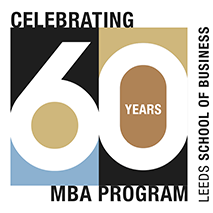How to Create a Professional Online Presence
It is easy to create a professional page. Once created, set your personal page to private so your professional page is the first place found in searches. Several job search companies are working with Facebook and more are expected to leverage the customer base soon.
Having a professional account allows you to:
Apply to jobs.
Network with businesses.
Have a professional presence.
It is important to be careful:
About photos and content.
Tone of your posts.
Who you have as connections; you can be judged on the company you keep.
Other ways to have Facebook work for you:
Join groups related to your professional interests or start your own .
Connect with industry professionals.
Recommend articles related to your job goals and interests.
Be engaged.
Like us on Facebook: https://www.facebook.com/leedscuboulder
Twitter is an incredible resource to use in your job search. Post your job status updates, and follow accounts that will help with your research.
For Success, ensure your profile is:
- Accurate. One professional description.
- Exciting. One word that is not boring.
- Targeted. One niche descriptor.
- Flattering. One accomplishment.
- Humanizing. One hobby.
- Intriguing. One interesting fact or feature about yourself.
- Connected. Your company or another social profile.
Use the tools available:
- Organize your feeds into lists for ease of post management.
- Follow people who follow you and those who are in your area of interest.
- Thank people for re-tweets and respond to questions.
- Know how to use the @ and # symbols when composing tweets and stay positive.
To tweet or not:
- Will the response from the tweet be beneficial to your online presence?
- Have you checked the information facts?
- Does the tweet have a negative connotation?
- Does the content have benefit to others?
If you answered “no” to any of the above, check your motivations and make adjustments.
Follow us on Twitter: https://twitter.com/leedsbiz
- Enhance your profile by adding industry-related keywords and an eye-catching headline.
- Example: Adaptable team player seeking mechanical engineering entry-level opportunities.
- Write a summary to include your top skills, a highlight of your experience and your current situation (either the job/internship you’re in or what you’re looking for). Make it personal, informative and unique to you.
- Example: I’m interested in positions in graphic design or human services, and would love to find an opportunity in which I can combine the two interests. I completed three internships during my college career, graduated with a 3.4 GPA, and paid for 60 percent of all my college-related expenses. I believe this demonstrates my ability to set goals and work hard to achieve them. I’m often described as a compassionate individual with a knack for identifying the most efficient way to complete a project.
- Customize your URL so employers can better find you. When you edit your public profile you have the option to customize the web address for your page. Then add your new custom URL “www.linkedin.com/in/your-name” to your resume, Twitter, email signature and more!
- Join Groups to connect with industry professionals, like-minded people, and find out more about where your area of interest is headed.
- Don’t use the generic LinkedIn message “I'd like to add you to my professional network on LinkedIn.” Instead, include how you are connected (shared group, fellow alum, etc.) and your reason for contacting them (advice, learn about their background, etc.).
- Example: Greetings! I found your profile on such and such group and found your background impressive. I’m very interested in pursuing a career in statistics. I would be very interested in speaking with you to learn more about your experiences in statistics and any advice you might have. We can discuss via email or phone, whichever is most convenient for you. I look forward to connecting.
- For third-degree contacts, in most instances you will need to ask for an introduction. In your introduction you will include a statement asking for the introduction and a message to the new contact.
- Example: Hello, Sue! I hope you are doing well. I noticed that you’re connected with Marcus Knight. I am very interested in connecting with him as he is currently working in a field I would like to pursue. Could you please pass along this message to him? Please let me know if you have any questions. I hope I’m able to return the favor in the future.
Join our LinkedIn Group: https://www.linkedin.com/school/university-of-colorado-boulder---leeds-school-of-business/
Remember! Nothing posted ever goes away. You can put up corrections, but the original remains.
Social Media is used by headhunters, HR professionals, and many employers to help make a difficult decision on a hire, give yourself an advantage by making sure your presence online is well developed and professional.







